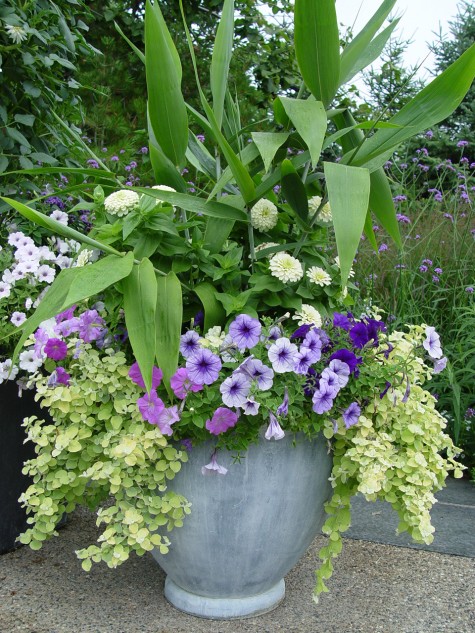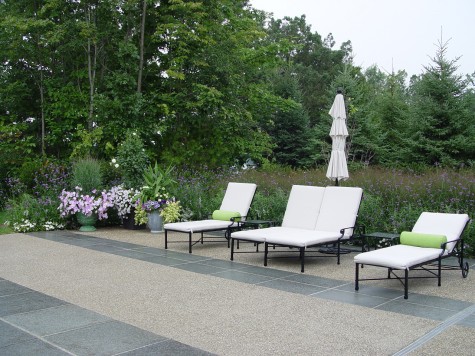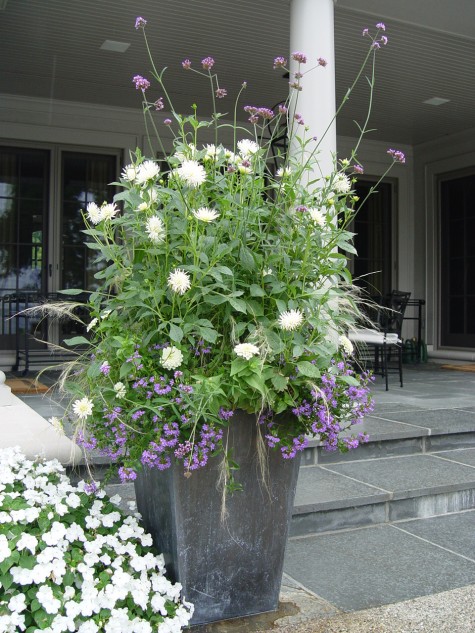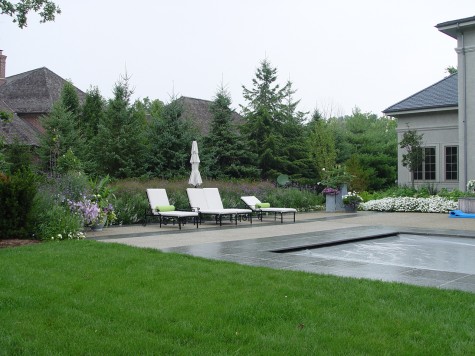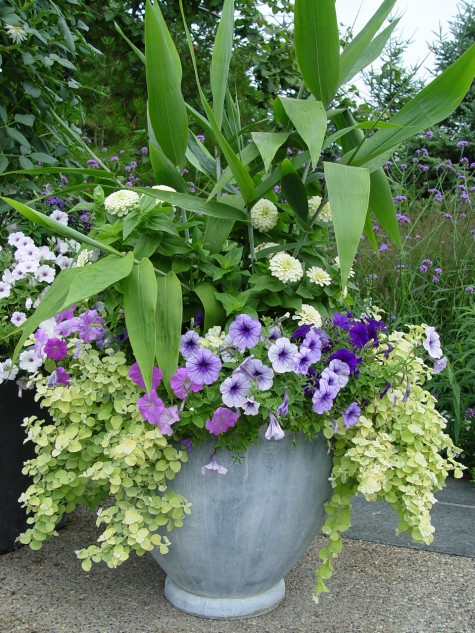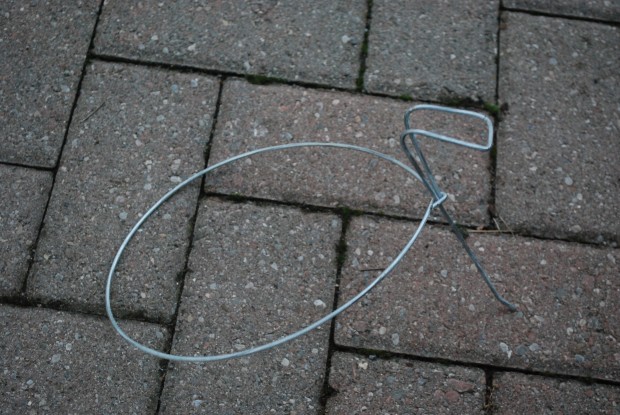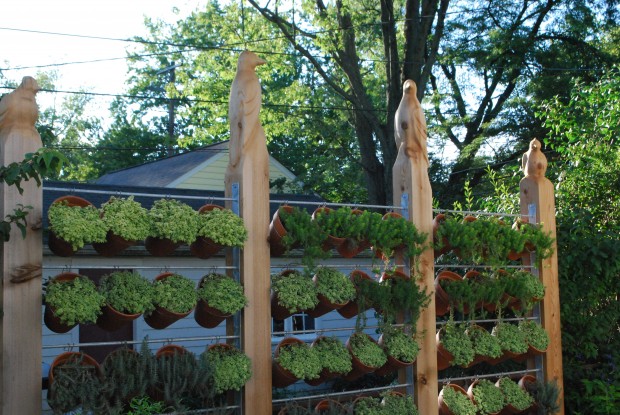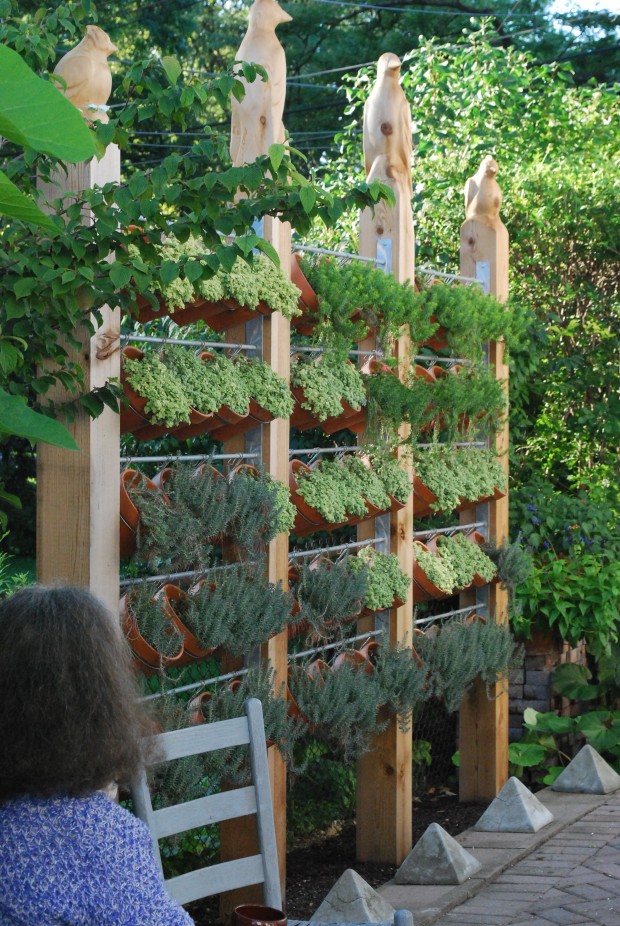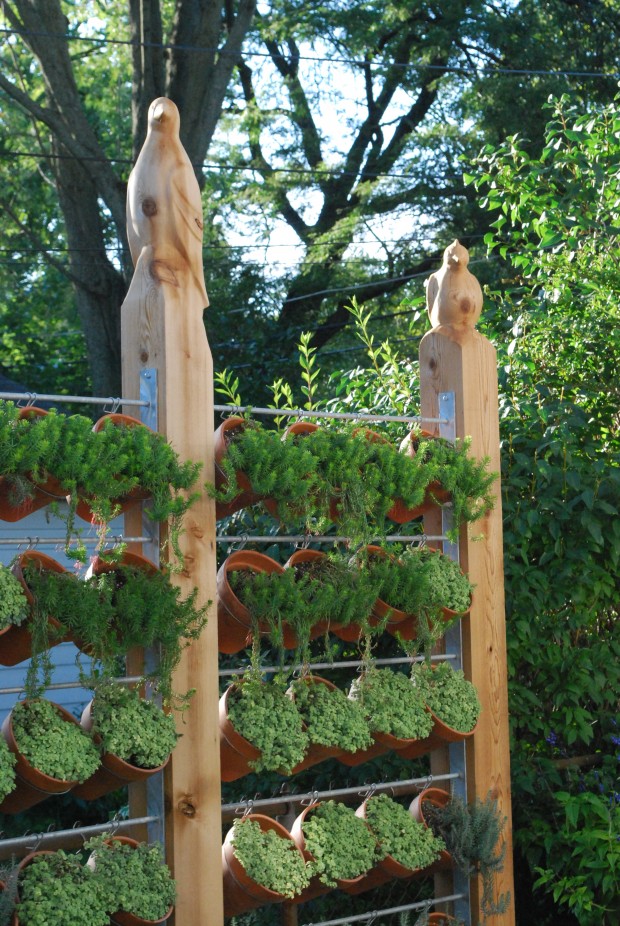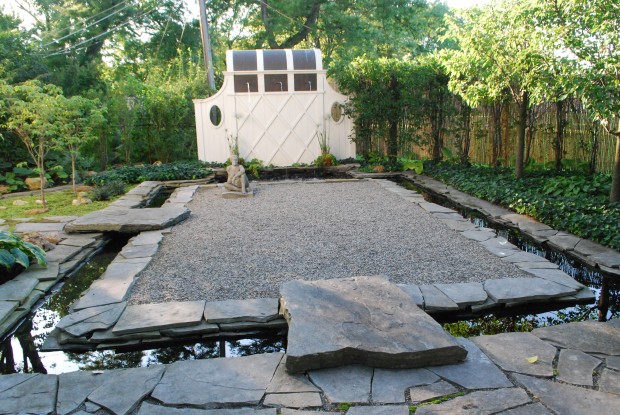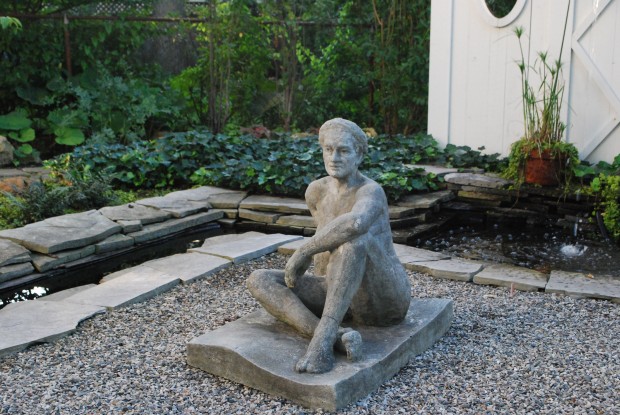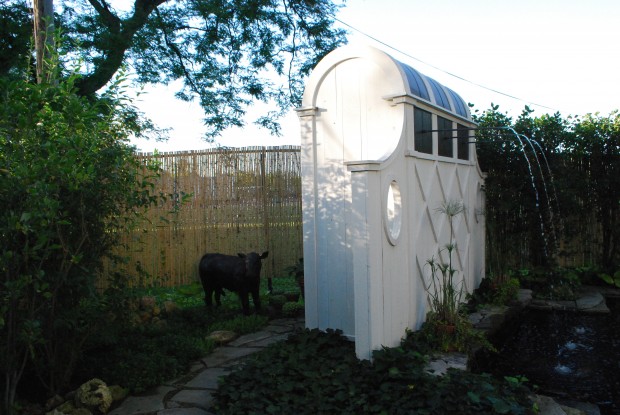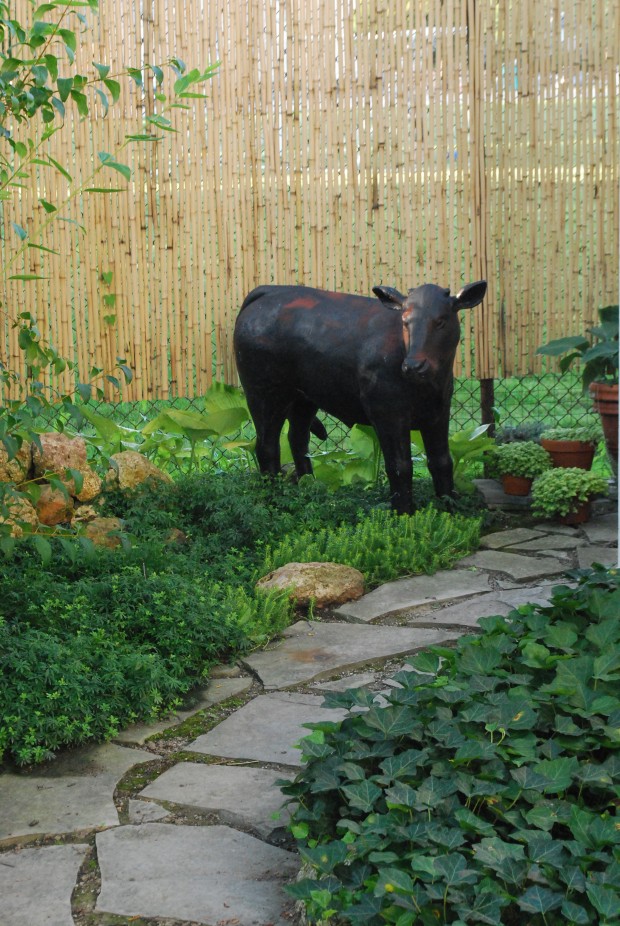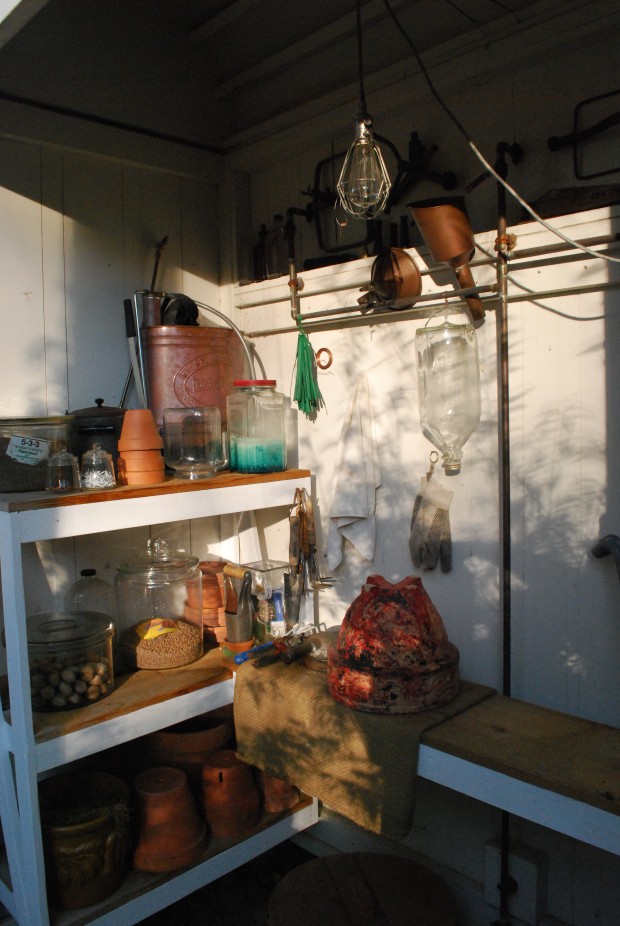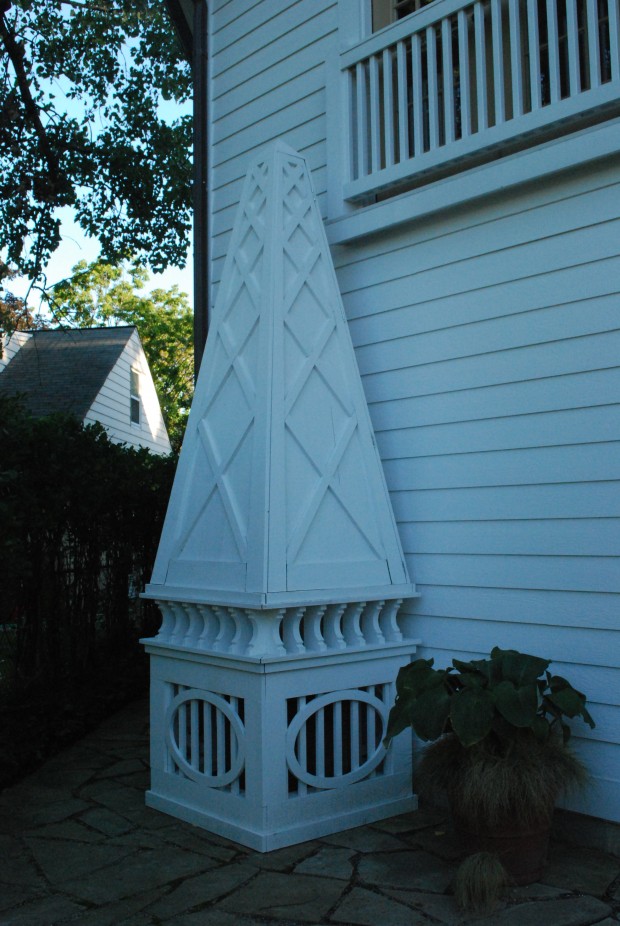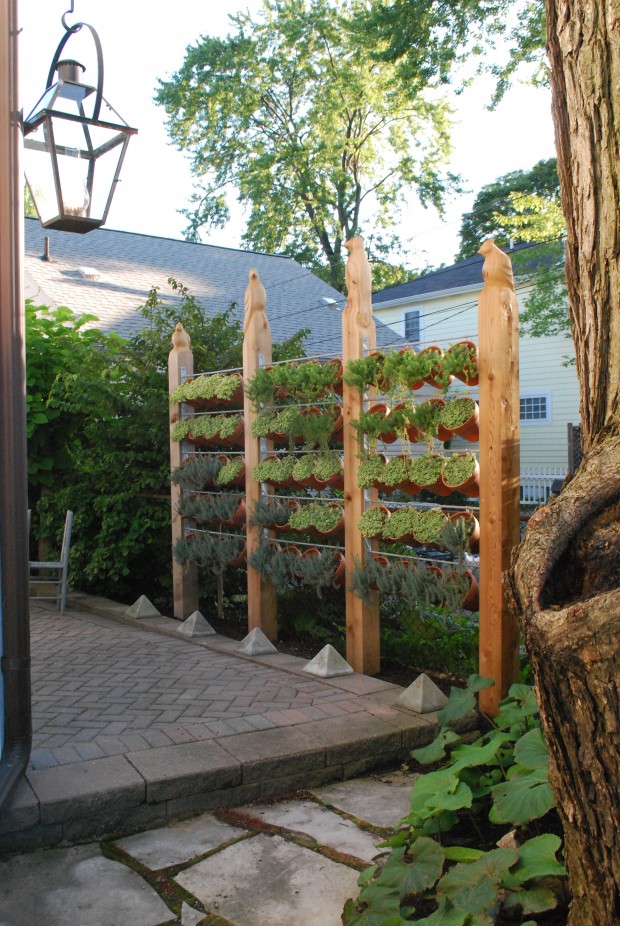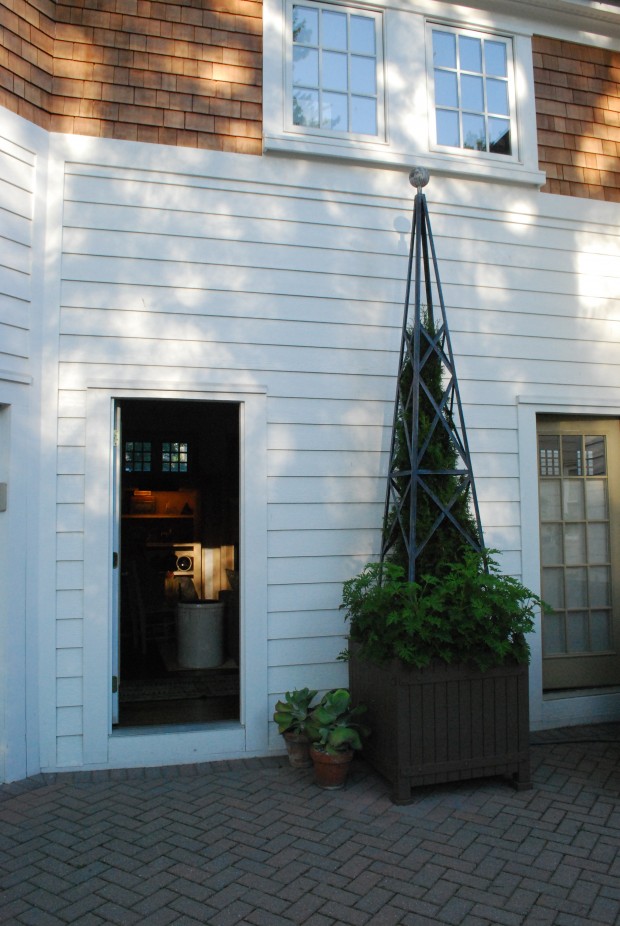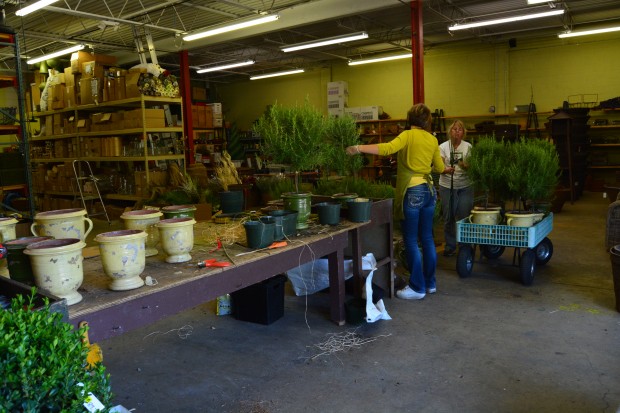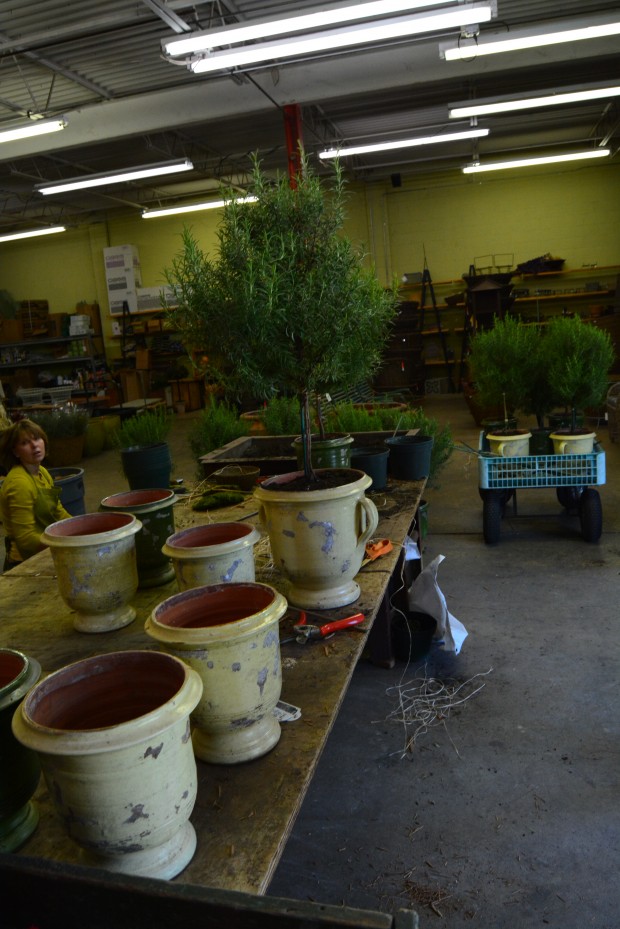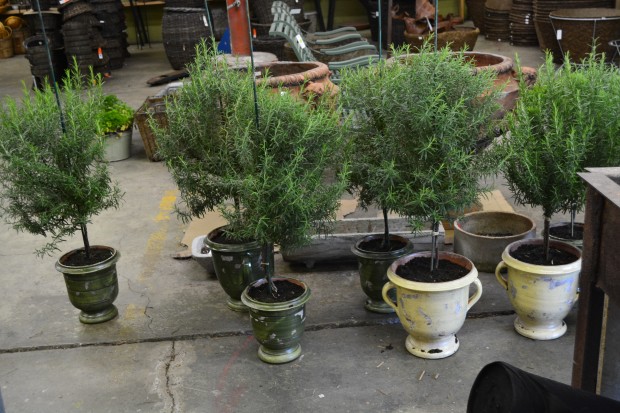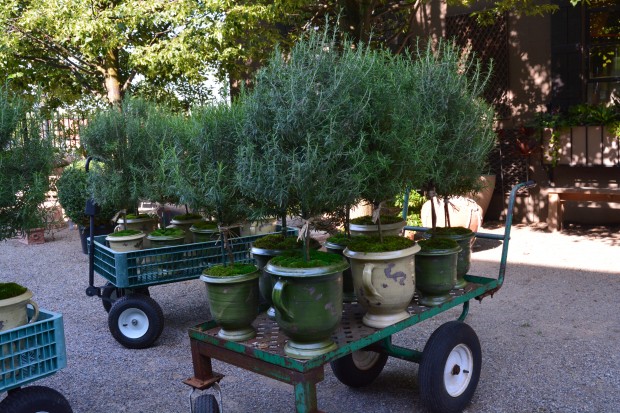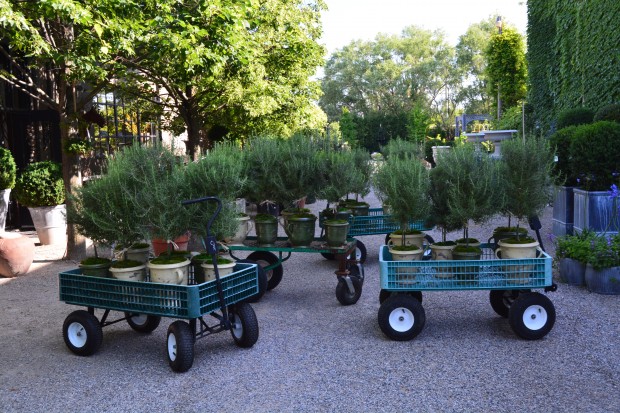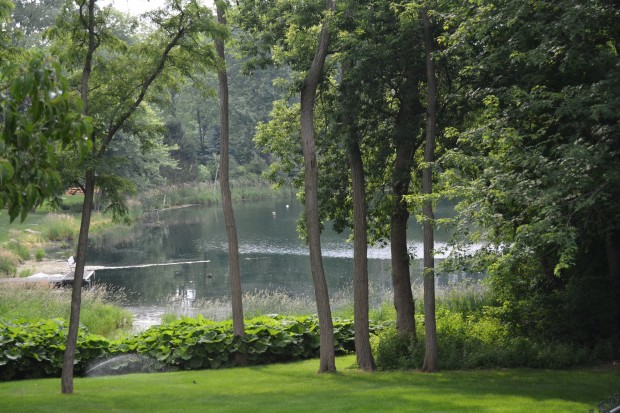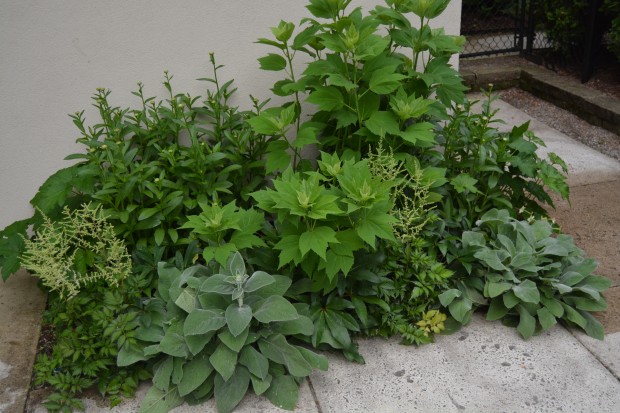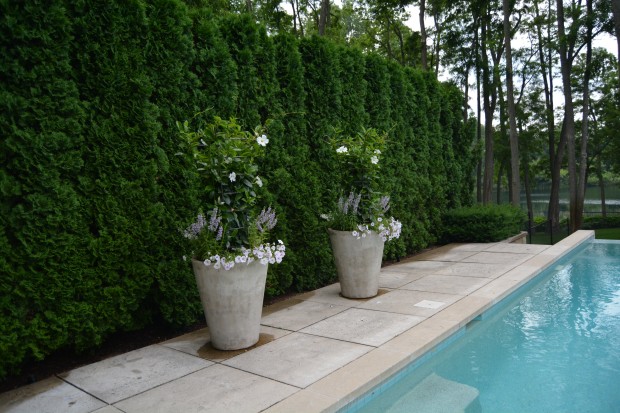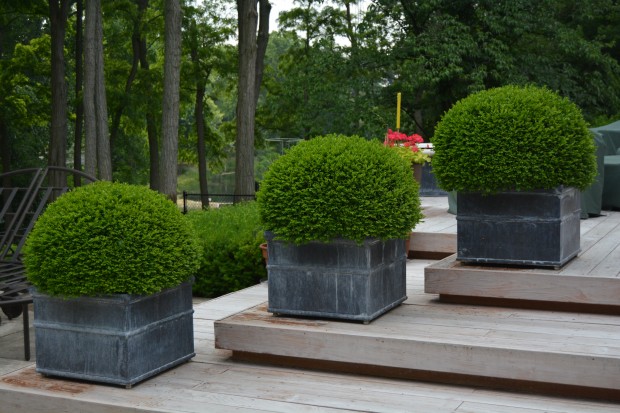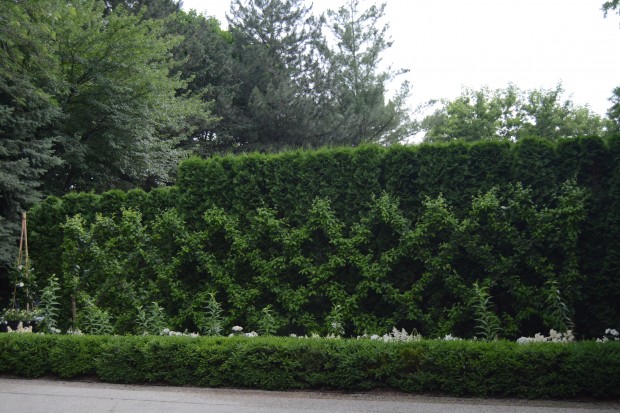A friend much more tuned into the 21st century than I let me know that this container planting of mine from 2005 was getting considerable interest via Pinterest. Pinterest? I was curious. Based on my recent research, Pinterest is an on line venue by which anyone, any invited anyone, can post images they fancy, in personal albums organized by subject matter of their own choosing. As for who posted this collection of photographs from my blog that had been pinned by lots of different people, I have no idea-it was not me. http://pinterest.com/source/deborahsilver.com/ This picture of a container planting I did in 2005 has gotten a lot of interest. Though the Wedding White zinnias from Burpee, the petunias and the lime licorice are easy to identify, I am embarassed to say I have no idea what the center plant is. I am almost certain it came from Landcraft Nursery. For several years we bought unusual and exotic tropical plants from them. A quick scan of their plant list did not ring a bell. If you can identify this plant, will you please write me? 
I am very pleased to see an annual container planting generate some interest. Gardeners are happy to share-I am no different. This was a new house, with a landscape design and installation imagined by my clients and I from start to finish. Once I was close to that finish, there was the matter of selecting and planting containers. The pool terrace was an obvious choice for containers. My clients planned to spend a lot of time there. The pool deck of concrete aggregate with bluestone detail was part of the original landscape plan. My client chose the furniture all on her own-and did a great job of it. The French flavor of the landscape asked for simple and spare choices in plant material, lots of pleasingly simple geometry, and a largely green palette for the plants in the pots.
This pair of tall Belgian zinc planters in contrasting heights are kept company by one low simple English lead square. The star of the show in the tallest pot-datura metel “Belle Blanche”. In the shorter, melianthus. The low lead box features a fistful of white geraniums. I like green plants. Datura, melianthus and geranium are eminently attractive in leaf. The flowers are welcome, when they come.
In keeping with what I would call a landscape with a French flavor, the plant choices are simple, and edited. Lavender, white and shades of green. Simple, elegant, spare.
Dahlias do not come into their own much until September and October. But during the summer, the dahlia plant has significant stature, great texture, and presence. A little in the way of Verbena bonariensis and scaevola, and tufts of a grass whose name I cannot remember makes for a container planting that is much about form and mass-stature-, and not so much about flowers.
Simple and serene, this. The containers stand proud, but not too proud.
My favorite part? A border of Panicum Virgatum, faced down with a tall salvia and verbena bonariensis. A rhythmic and subtle planting that spills over the edge of the pool terrace.
A good landscape does a lot of things. Trees get planted, where there were none. Spaces get created that are friendly to people. Plants of visual interest to people and of vital interest to butterflies and birds get added. Everywhere you look, there is green.
In April I will have been been posting essays about gardens, landscape, and the design thereof for three years. As a matter of course, I post lots of my own pictures in support of what I write. Generating those images takes every bit as much time as the writing. An image can no doubt be very powerful, and compelling. This is what is interesting me so much about Pinterest. What we see matters much. An image speaks in a way all its own.
